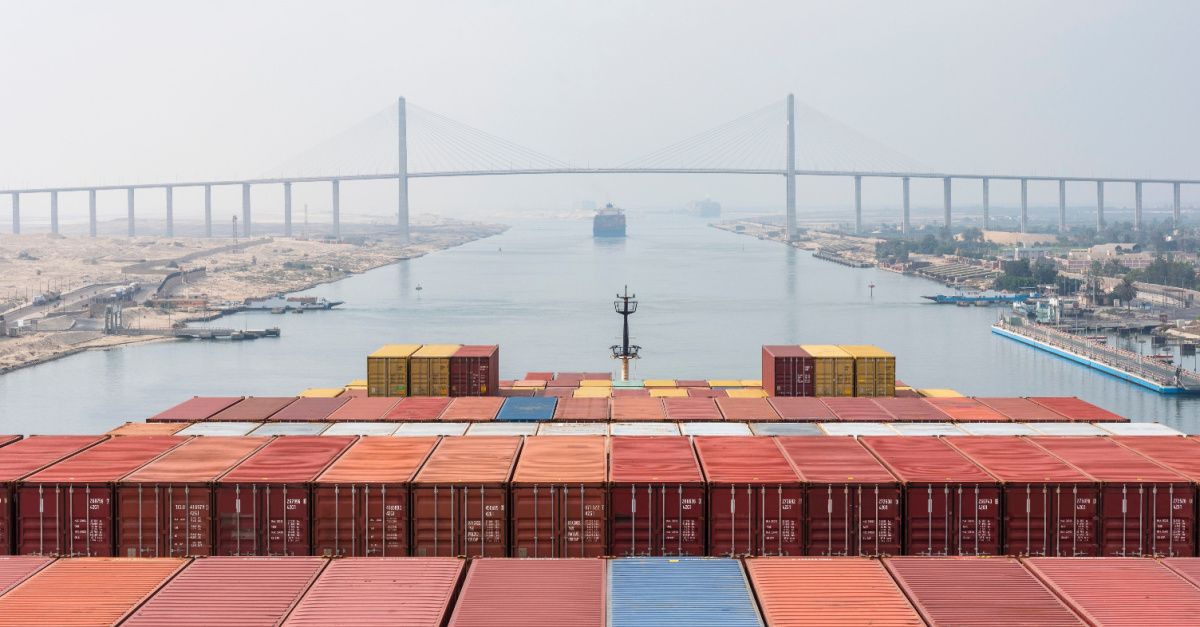
Supply Chain in Crisis: The Red Sea Through Expert Eyes
The supply chain disruptions brought about by the COVID-19 pandemic have largely resolved as global economies returned to normal consumption patterns.
But a new crisis looms for companies exposed to global trade: attacks on cargo ships sailing on the Red Sea. These attacks have prompted U.S.-backed cargo ships to avoid utilizing the Suez Canal and pass through the Cape of Good Hope instead.
As the Crisis in the Red Sea Grows, Threats to the Supply Chain Compound
The attacks by Houthi rebels on cargo vessels and tankers seeking to sail through the Red Sea and the Suez Canal appear for now to show no resolution in sight.
The Houthis, who have been attacking cargo ships since mid-November, say their actions are in response to the Israeli-Palestinian conflict occurring in Israel’s Gaza Strip.
But the strikes are causing disruptions in the global supply chain similar in severity to those seen during the Covid-19 pandemic, according to some experts. Major shipping lines such as Maersk and Hapag-Lloyd have been diverting their ships away from the Red Sea and instead are directing them to go around Africa’s Cape of Good Hope — adding days of traveling time and causing shippers in North America and Europe to reassess their shipping timelines. The attacks are also stoking inflation fears amid delays and higher shipping costs for energy products, chemicals, and consumer goods.
An end to the attacks on the cargo ships by the Houthis doesn’t seem to be readily visible. But tools and resources from providers such as Searoutes can help companies navigate this crisis. These tools may even allow companies to continue to address meeting sustainability targets amid the supply chain volatility.
Through Expert Eyes: Four Industry Leaders on the Crisis in the Red Sea
Although the Houthi attacks appear to be directed at cargo ships whose goods have a stake in the North American and European markets, the effects are reverberating throughout the global supply chain.
Experts Warn of Conflict’s Effects on Ports
While coverage of the attacks has focused on what’s happening in the Red Sea, other regional geopolitical instabilities highlight the escalated risks for companies that have been relying on the Suez Canal.
Efforts to disrupt port activity as a strategy in the conflict between Ukraine and Russia, as well as past skirmishes between the Houthis and Saudi Arabia where Houthis attacked Saudi Arabia’s infrastructure, reflect the vulnerability that regional ports may have should Houthi attacks spread beyond sea waters.
“Given the escalation over shipping in recent weeks, there is a risk that the conflict could expand to involve seaports in the region. These could be subjected to drone or missile attacks under the pretext that some of the ports are used for logistical purposes by the naval forces in the region who are attacking the Houthis,” container shipping expert Lars Jensen said in a recent LinkedIn post.
“Or such attacks could have the pretext that vessels with Israeli, US, or UK ties are sitting at berth discharging cargo, which could be used in the efforts against the Houthis. Missiles or drones could then be aimed at such vessels,” Jensen continued.
As Conflict Grows, Container Rates Rise
Meanwhile, efforts to divert cargo ships around Africa instead of through the Red Sea and the Suez Canal are already raising costs.
“As Houthi attacks continue with no end in sight, shipping costs are rising in accordance with the disruption,” Vizion API CEO Kyle Henderson said last month. “The cost to ship a container to China has risen to $2,143 as of Dec. 19, skyrocketing from its earlier low of $1,371. While it’s still too early to understand what, precisely, the extenuating results of the disruption in the Red Sea will be upon consumers, the crisis has already resulted in a notable cost increase for shippers.”
As Vessels Reroute, Shippers Refocus on Sustainability
Another consequence of the Red Sea disruptions is the increase in vessel emissions that result from cargo ships sailing around Africa and via the Cape of Good Hope (COGH) because of the longer distances involved.
Companies may need to utilize the carbon calculators from third-party firms to determine changes in vessels’ emissions levels. These calculators may consider factors such as individual vessels’ TEU capacity.
“The decision to route via COGH does change the equation, since not only the distance changes, but the speeds of vessels as well,” Searoutes co-founder Pierre Garreau said earlier this month.
Tools that companies might want to consider using include Searoutes’ carbon calculator, which allows companies to calculate carbon emissions of ocean vessels while factoring in such things as optimal routes. Searoutes also produces Routing API, a tool that provides visibility into fuel consumption, deviation costs, and arrival times, and Vessel API, which provides visibility into vessel traffic data.
Learn More: Attend Our Roundtable Webinar on Jan. 31

While uncertainties loom over when and how the Red Sea shipping crisis will abate or be resolved, an upcoming webinar with Searoutes and Vizion API, “Expert Insights into the Red Sea Crisis & Its Impact Beyond the Middle East,” can help companies hedge against this supply chain disruption.
Joining the roundtable webinar’s host, Eric Johnson, senior editor of logistics technology for the Journal of Commerce, will be the following maritime experts:
- Lars Jensen, CEO and Partner, Vespucci Maritime
- Pierre Garreau, Co-Founder and CEO, Searoutes
- Kyle Henderson, Co-Founder and CEO, Vizion API
To attend this webinar and hear the insights and analyses of these experts, please visit this page for more information and to register: https://www.linkedin.com/events/roundtablewebinar-expertinsight7155598970038145024/theater/